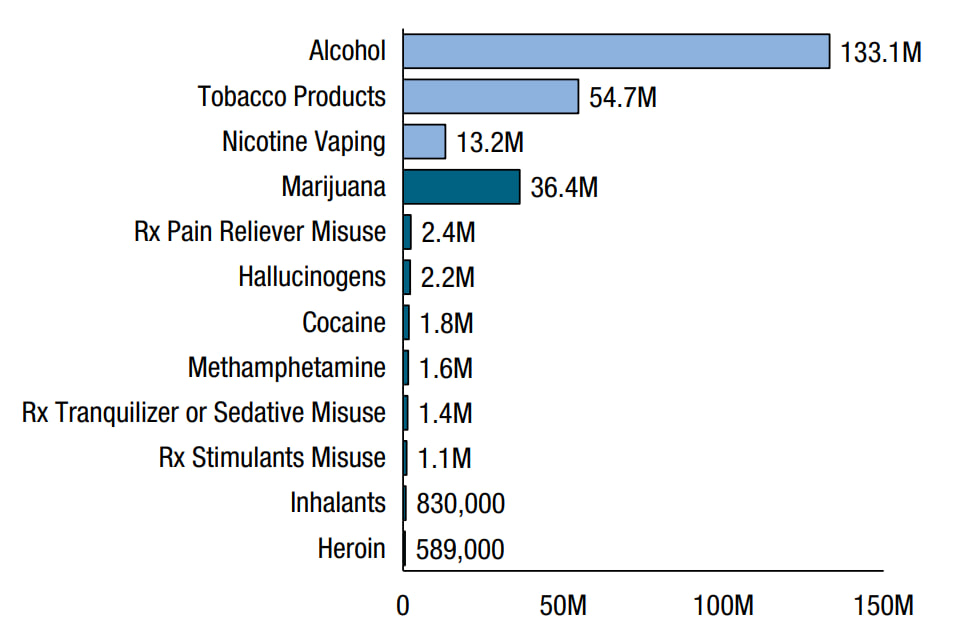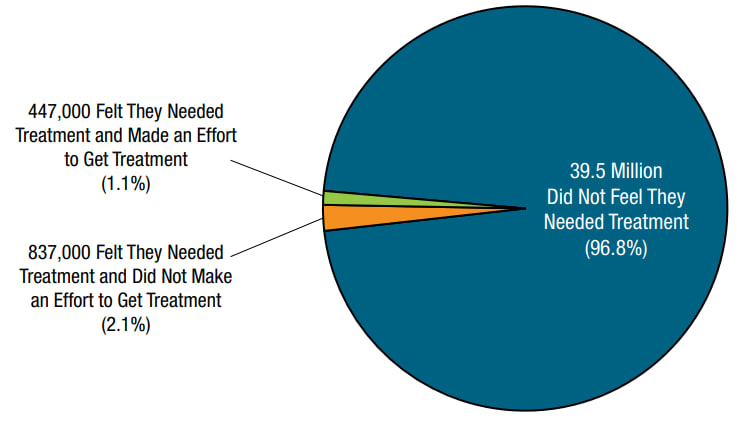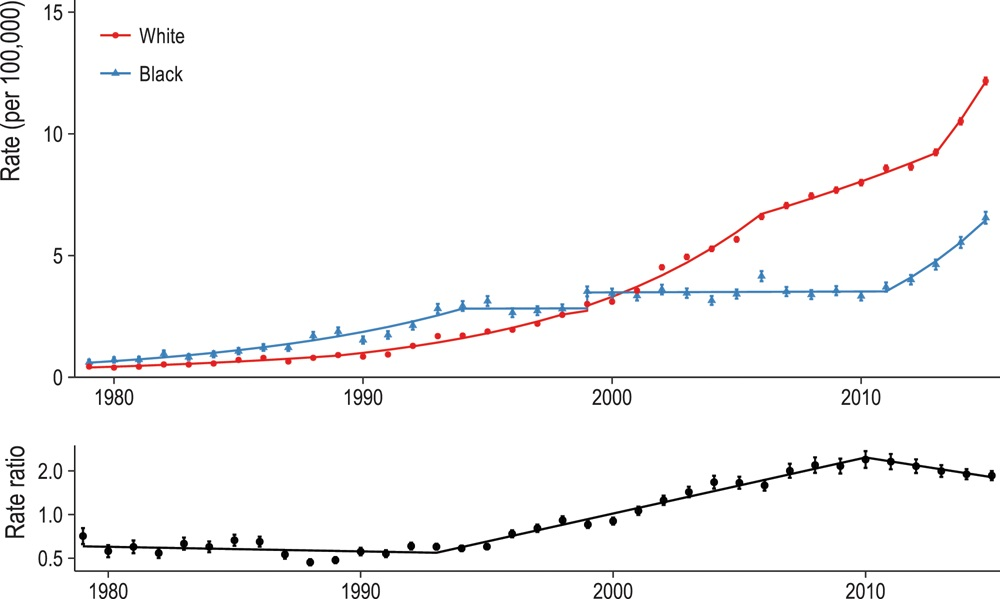Introduction
Drug-related disorders are dangerous and widespread in the United States: they increase the possibility of mental issues and criminal activity and lead to addiction. The underserved and less protected social classes, such as ethnic and racial minorities, are much more vulnerable to these problems. They have more chances of arrest for the usage and limited access to social protection, treatment, and support. In addition, as they live in poorer conditions, they are susceptible to violence and probably have many psychological traumas, which increase the probability of drugs being used to ease the pain temporarily. In that way, underserved minorities have increased chances of suffering from substance abuse and its consequences, such as crimes and mental problems. I think we should focus on helping them rather than punishing them.
Substance Use and Abuse
There is a controversy about what should be considered substance abuse and what is normal usage. Students often describe their experience with substances, including alcohol and marijuana, as something normal (Willis et al., 2019). The number of substance users in the U.S. remains high, with more than 130 million Americans drinking alcohol and more than 35 million smoking weed regularly, as one can see in Figure 1 (SAMHSA, 2022). According to Figure 2, those suffering from drug misuse rarely seek any help, even if they need and want it. More secure social classes can use substances and feel well with them, knowing they will not be arrested and can obtain aid when necessary. Conversely, underserved people are much more susceptible to risks and sufferings associated with substances (Wallace & Muroff, 2002). Therefore, substance use and abuse are not directly connected; generally, the lower one’s life conditions are, the larger the abuse risk.

Personal Opinion
I believe that substance use and abuse are different things, despite being interconnected. However, while it is possible to use substances without becoming addicted, it is easy to ignore the risks (Willis et al., 2019). Therefore, to ensure that substance usage will not lead to wrong consequences, one needs to be familiar with the mechanism of drug action and have unrestricted access to treatment and support. As this article will show, people use drugs mostly from being in a desperate state and poor living conditions; underserved social groups, such as many African Americans, are especially vulnerable. It is especially true for alcohol and hard drugs like crack cocaine and opioids. On the other hand, people living in better conditions suffer much less from substance usage (Wallace & Muroff, 2002). If we work firstly to improve the living conditions of all people, regardless of their race or social class, it will be much more efficient in solving these problems than severe punishments.
Societal Costs of Substance Use Disorders: Crime and Mental Issues
Criminal activity and mental issues are the main negative consequences of drug abuse. Both are interconnected and present among underserved people to a much greater extent. As mentioned, altered states of consciousness caused by drugs lead to risky behavior, such as promiscuity, conflicts, and fights (Willis et al., 2019). Along with that, the criminalization of drug users often increases the violence and sufferings connected with addiction (Dee & Pyne, 2022). People who need help are often arrested, sued, and punished instead of receiving it, leading to an increased chance of being involved in criminal activity (Bourgois, 2003). Underserved social groups, such as racial minorities, are especially vulnerable due to poor living conditions and dangerous environments.
Problems with mental health and drug addiction strengthen each other. Depression, anxiety, and pain syndromes increase the chances of using drugs, including illegal ones, to feel temporal relief (SAMHSA, 2022). Criminal activity, poor conditions, and a dangerous environment are also deeply interconnected with drug usage and mental health problems, as they can cause psychological traumas (Kim et al., 2019). They can cause even more destructive and self-destructive behavior if one does not cope with them. All these factors are especially common among underserved populations, including African American youths (Shervington & Bland, 2004). Thus, crime, mental issues, and substance abuse are three interconnected social problems that we should study together. I believe that, along with punishing actual criminals, underserved people should obtain social support. It will provide them and their children the chance to live in better conditions.
Drug Epidemics and Disparities
Underreporting and Racial Disparities
People often tend to hide that they have any drug-related disorder, fearing social stigmatization and criminal consequences, especially when taking illicit drugs. As drug users have more chances of encountering a police officer, who will arrest them than someone who will help, they can hide their problems and even refuse to have treatment (Dee & Pyne, 2022). As figure 2 shows, almost 97% of Americans with problems feel that they need no treatment, and another 2% refused to get it, according to the official estimate. Racial disparities are present among the U.S. population: it is connected with the poorer life quality of African and Latin Americans compared to Caucasians (Shervington & Bland, 2004). African American youth often live in conditions where violence is usual. They often cannot obtain help with their psychological traumas, remaining in the vicious cycle of crime, drugs, and mental problems.

African Americans: Crack Epidemic
Crack is a cocaine-based drug used by smoking: in the 1980s and 1990s, crack usage was exceptionally high. Figure 3 shows the number of articles related to crack abuse in popular newspapers, and the time of the epidemic can be seen by peaks (Hartman & Golub, 1999). Crack usage is associated with African American, especially in the context of crimes and other social problems that are widespread among them (Wallace & Muroff, 2002). However, the actual usage by Black Americans is roughly the same as by Caucasians and even slightly lower.

Caucasians: Opioid Epidemic
Similarly, the opioid epidemic defines a widespread usage of opioid drugs, which continues to rise now. Opioids are used to relieve pain, but they are extremely addictive, have severe withdrawal syndrome, and increase the chance of death. While the usage of heroin, one of the most common opioid drugs, is much lower than many others, as Figure 1 shows, its danger is much higher (SAMHSA, 2022). Unlike the crack epidemic, the opioid one tends to be associated mostly with Caucasians, as there is a much larger percentage of them being reported as opioid users, as one can see in Figure 4 (Alexander et al., 2018). However, rates are highly underreported in states with large Black populations, which shows that they actually suffer from the opioid epidemic, too. The problem is even worse for them due to poorer living conditions and limited access to support and treatment.

Summary
Thus, social problems are primarily caused not by the usage itself but by the poor living conditions and dangerous environment. African Americans are generally poorer than other racial groups and, therefore, subjected to social problems such as domestic violence and lack of health services (Shervington & Bland, 2004). In the 1980s, during the peak of the crack epidemic, police used brute force and incarceration to fight drug spread and usage, but despite the limited public support, it only worsened the situation (Murch, 2015). Overcrowded prisons were full of violence, and living conditions worsened; therefore, crime and mental issues rose. Today, opioid epidemic is mostly associated with Caucasians, but many Black Americans suffer from it, remaining unnoticed and with much less medical support. Stereotypes about African Americans who are all criminals and addicts show the social stigmatization problem (Shervington & Bland, 2004). It is extremely dangerous, as it prevents us from solving social problems and, instead, expands the hate and animosity between races and social groups.
Conclusion
Drug misuse is a large social and personal issue associated with criminal activity and mental issues. Crack cocaine and opioids, especially heroin, are the most dangerous drugs, causing severe addiction and increasing risky behavior, mental problems, and chances of sudden death. Underserved populations, such as racial and ethnic minorities, are the most vulnerable to all three issues. Even if we limit their drug access, without providing medical and psychological support, they will still be engaged in criminality and other destructive activities. Therefore, we should apply a complex approach to solve drug abuse issues. Along with punishing criminals, we should increase people’s literacy about drugs, especially among underserved populations, and provide them with medical and psychological support.
References
Alexander, M. J., Kiang, M. V., & Barbieri, M. (2018). Trends in Black and White opioid mortality in the United States, 1979–2015. Epidemiology, 29(5), 707–715. Web.
Bourgois, P. (2003). Crack and the political economy of social suffering. Addiction Research & Theory, 11(1), 31–37. Web.
Dee, T. S., & Pyne, J. (2022). A community response approach to mental health and substance abuse crises reduced crime. Science Advances, 8(23). Web.
Hartman, D. M., & Golub, A. (1999). The social construction of the crack epidemic in the print media. Journal of Psychoactive Drugs, 31(4), 423–433. Web.
Kim, B. K. E., Gilman, A. B., Kosterman, R., & Hill, K. G. (2019). Longitudinal associations among depression, substance abuse, and crime: A test of competing hypotheses for driving mechanisms. Journal of Criminal Justice, 62, 50–57. Web.
Murch, D. (2015). Crack in Los Angeles: Crisis, militarization, and black response to the late twentieth-century war on drugs. Journal of American History, 102(1), 162–173. Web.
SAMHSA. (2022). Key substance use and mental health indicators in the United States: Results from the 2021 national survey on drug use and health. In Substance Abuse and Mental Health Services Administration. Web.
Shervington, D. O., & Bland, I. J. (2004). A study of psychosocial determinants of the crack cocaine epidemic in African American males. Addictive Disorders & Their Treatment, 3(2), 51–57. Web.
Wallace, J. M., & Muroff, J. R. (2002). Preventing substance abuse among African American children and youth: Race differences in risk factor exposure and vulnerability. The Journal of Primary Prevention, 22(3), 235–261. Web.
Willis, E., Adams, R., & Keene, J. (2019). If everyone is doing it, it must be safe: College students’ development of attitudes toward poly-substance use. Substance Use & Misuse, 54(11), 1886–1893. Web.